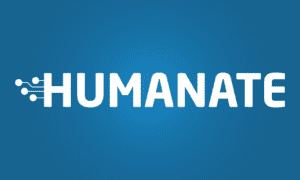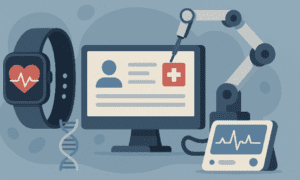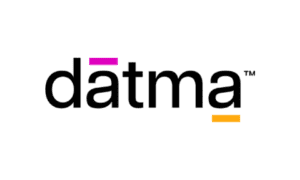Healthcare organizations around the world are under immense pressure. Rising patient volumes, growing administrative workloads, clinician burnout, and an urgent need for cost efficiency all point to one solution: automation powered by artificial intelligence (AI).
Unlike traditional automation, which handles only routine, rules-based tasks, AI automation combines intelligence, adaptability, and scale. It’s transforming how hospitals, clinics, and health systems operate, delivering better patient outcomes while streamlining operations behind the scenes.
Why Healthcare Needs AI Automation
Healthcare is one of the most data-rich but process-heavy industries. Administrative inefficiencies often mean clinicians spend more time on screens than with patients. In fact, studies show doctors can spend up to half of their day documenting care, reviewing charts, and processing forms instead of engaging with patients.
This is where AI automation comes in. It enables healthcare providers to optimize workflows, reduce errors, and reclaim time for direct patient care.
How AI Automation Improves Patient Care
AI automation services improve healthcare by enhancing patient care through features like virtual assistants and personalized treatment plans, and by boosting operational efficiency via automated administrative tasks such as scheduling, billing, and documentation.
Some of the most impactful patient-facing applications include:
- Virtual health assistants: 24/7 patient support for scheduling, reminders, and answering common questions.
- Personalized care recommendations: AI models analyze patient history, lab results, and clinical notes to suggest tailored treatment pathways.
- Faster diagnoses: AI-powered diagnostic tools can assist clinicians in analyzing imaging scans, lab reports, and genetic data more quickly and accurately.
- Remote monitoring: Devices connected with AI algorithms can track patient vitals in real-time, alerting providers when intervention is needed.
The result? Improved patient experiences, earlier interventions, and care that feels more personal and accessible.
How AI Automation Optimizes Healthcare Operations
Beyond the bedside, AI automation drives measurable gains across healthcare operations:
- Administrative tasks: Automated scheduling, claims processing, billing, and medical coding reduce bottlenecks and minimize costly errors.
- Documentation & compliance: AI transcription and summarization tools ease the burden of electronic health record (EHR) documentation, ensuring more complete and accurate records.
- Resource allocation: Predictive analytics can forecast patient volumes and staff requirements, reducing wait times and optimizing shift scheduling.
- Cost savings: Streamlined operations mean fewer manual hours, reduced overhead, and quicker reimbursements from insurers.
By reducing friction in back-office functions, AI automation frees healthcare professionals to focus on what only humans can do—compassionate, complex patient care.
Challenges and Considerations
While AI automation holds enormous potential for healthcare, implementing it successfully requires careful planning around a few key challenges:
1. Data Quality & Integration
Healthcare data is often scattered across multiple systems and formats. Poor data quality can limit AI accuracy.
Solution: Standardize and integrate data sources early to ensure clean, consistent inputs for automation.
2. Privacy & Compliance
Patient information is highly sensitive. Compliance with laws like HIPAA and GDPR is non-negotiable.
Solution: Use encryption, access controls, and anonymization, and partner with vendors that follow strong data governance frameworks.
3. Model Accuracy & Bias
AI models can make mistakes or reflect bias from training data.
Solution: Continuously monitor model performance, validate predictions, and include human review for critical decisions.
4. Change Management & Adoption
The biggest hurdle is often human, not technical. Staff may worry that automation will replace them or add complexity.
Solution: Communicate clearly that AI supports, not replaces, clinicians. Provide training, involve staff in pilot phases, and highlight early wins to build confidence and trust.
5. Integration with Legacy Systems
Old hospital IT systems can make automation difficult to deploy.
Solution: Use modern APIs and integration layers that connect new AI tools with existing EHR and billing platforms.
The OBS Approach to AI Automation in Healthcare
At Outsourcing Business Solutions (OBS), we specialize in designing and implementing AI automation tailored to healthcare environments. Our approach includes:
- Process discovery: Identifying high-impact areas where automation drives real ROI.
- Pilot programs: Starting with small, safe use cases such as claims automation or documentation assistance.
- Scalable deployment: Expanding from pilots to enterprise-wide programs, with robust compliance frameworks.
- End-to-end integration: Seamlessly connecting AI models, RPA, and EHR/EMR systems to optimize workflows.
- Governance & monitoring: Ensuring continuous performance tracking, bias testing, and regulatory compliance.
With OBS, healthcare providers can balance innovation with compliance, scaling AI automation Services without compromising patient trust.
Final Thoughts
AI automation is no longer futuristic—it’s here, and it’s already improving patient care and healthcare operations worldwide. From reducing documentation burdens to delivering personalized treatment plans, AI is helping healthcare professionals do what they do best: provide compassionate, high-quality care.
For healthcare organizations, the choice is clear: embrace AI automation to improve outcomes, lower costs, and future-proof operations. With the right partner, it’s possible to achieve this transformation quickly, safely, and sustainably.
Ready to explore AI automation for your healthcare organization? Visit AI & Intelligent Automation Services by Outsourcing Business Solutions to see how we can help you transform patient care and operations.



































